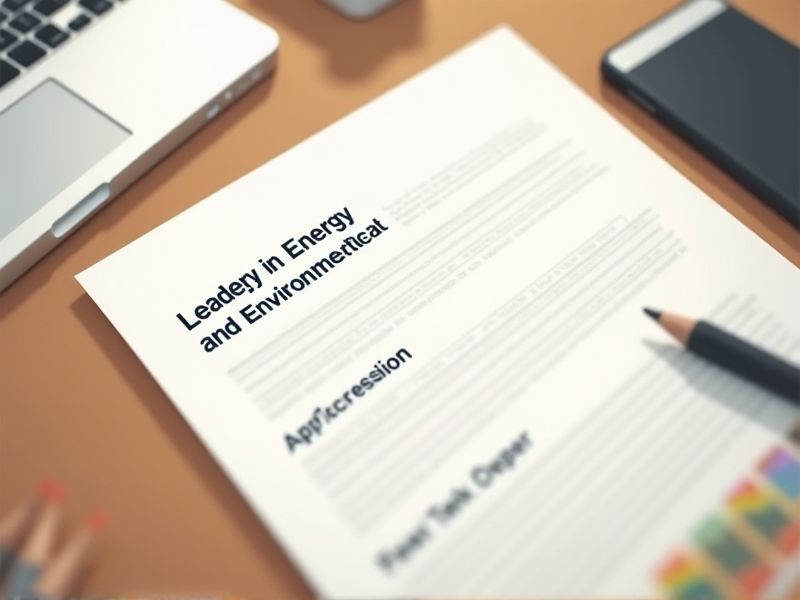
To ensure expertise in sustainable building practices, individuals pursuing Leadership in Energy and Environmental Design (LEED) Accreditation need specific certifications. Such credentials validate a professional's knowledge in energy efficiency, water resource management, and environmental impact reduction. Certifications also demonstrate proficiency in the latest green building technologies and design approaches. Essential certifications for a LEED Accreditation Professional include those focusing on energy performance and sustainable design.
LEED Green Associate
Achieving the LEED Green Associate credential demonstrates a foundational understanding of green building principles, which is essential for advancing into more specialized roles. This credential covers core concepts essential for energy efficiency and sustainable construction, prerequisites for the advanced LEED Accreditation Professional (AP) certification. Companies often prioritize professionals with LEED Green Associate status when involved in environmentally-focused projects, as it signifies a commitment to sustainability. With the Green Associate credential as a prerequisite, candidates are better positioned to pass the rigorous LEED AP exam, enhancing their expertise in specific LEED categories.
LEED Accredited Professional (AP) in Building Design + Construction
A LEED Accredited Professional (AP) in Building Design + Construction is needed to navigate the complex criteria of sustainable building practices effectively. Expertise in this area enables professionals to guide projects toward certification goals within the LEED framework, ensuring compliance with energy and environmental standards. Knowledge of building systems, materials, and design principles directly influences a project's sustainability and the optimization of resource efficiency. Earning the LEED AP credential demonstrates a commitment to leading green building projects, improving cost savings, and reducing environmental impact.
LEED Accredited Professional (AP) in Interior Design + Construction
LEED Accredited Professionals in Interior Design + Construction are essential because they bring specialized knowledge on sustainable building practices. Their expertise ensures that interior spaces meet rigorous environmental standards, impacting both energy efficiency and occupant health. This accreditation elevates project value by integrating eco-friendly materials and technologies, aligning with increasing environmental regulations. Their role is pivotal in achieving LEED certification, signaling a commitment to sustainability in construction projects.
LEED Accredited Professional (AP) in Operations + Maintenance
The LEED Accredited Professional (AP) in Operations + Maintenance is essential for optimizing the sustainability and efficiency of existing buildings. By focusing on energy performance, water use reduction, and improved indoor environmental quality, LEED APs guide buildings to meet stringent environmental standards. Their expertise significantly contributes to reducing operational costs and enhancing a building's marketability and value. Knowledge in this area ensures the leadership team can implement sustainable operational strategies that comply with LEED certification requirements.
LEED Accredited Professional (AP) in Neighborhood Development
LEED Accredited Professional (AP) in Neighborhood Development is essential because it provides specialized knowledge in sustainable planning and development practices. This expertise helps guide projects to achieve environmental goals, promoting eco-friendly communities. It increases a project's chance of achieving LEED certification, which enhances its appeal to environmentally conscious stakeholders. Trained professionals are better equipped to address local environmental challenges, leading to more successful sustainable developments.
LEED Accredited Professional (AP) in Homes
Having a LEED Accredited Professional (AP) in Homes is essential as they provide expertise in sustainable residential building practices. LEED AP in Homes ensures that projects align with energy-efficient and environmentally responsible standards. Their involvement can lead to better resource management and lower operational costs for residential projects. The presence of a LEED AP in Homes can enhance a project's credibility and marketability by meeting rigorous green building benchmarks.
WELL Accredited Professional (WELL AP)
A WELL Accredited Professional (WELL AP) focuses on the well-being and health impacts of building occupants, complementing the environmental efficiency emphasis of a LEED Accredited Professional. Integrating WELL AP expertise helps ensure that sustainable design also prioritizes human health, which is becoming a crucial consideration in green building projects. The user-centric perspective of WELL AP enriches the holistic approach needed in LEED projects by aligning human health principles with energy and environmental strategies. Employing both accreditations can lead to more comprehensive, multifaceted sustainability outcomes within the built environment.
Certified Energy Manager (CEM)
Certified Energy Managers (CEM) bring extensive knowledge of energy efficiency and management to projects, which aligns with the sustainability goals of the Leadership in Energy and Environmental Design (LEED) framework. Their expertise ensures that environmental strategies are practical, leading to successful implementation of energy-saving measures. CEMs contribute to accurate assessments of building performance, crucial for meeting LEED certification requirements. Their involvement can enhance project credibility, assuring stakeholders of commitment to sustainable and efficient operational practices.
Certified Passive House Consultant (CPHC)
Certified Passive House Consultants possess in-depth knowledge of energy-efficient building practices, which complements the Leadership in Energy and Environmental Design (LEED) framework's focus on sustainability. CPHC training equips professionals with skills to optimize building envelope performance, crucial for both energy savings and LEED certification points. Leveraging passive design principles can directly contribute to achieving higher LEED levels, as it reduces a building's overall energy demand. Having a CPHC involved in a LEED project enhances the potential for innovation credits by integrating advanced passive strategies.
Energy Star Accredited Professional
Achieving Energy Star Accredited Professional status demonstrates expertise in energy efficiency, which strengthens a professional's qualifications for Leadership in Energy and Environmental Design (LEED) projects. Specialized knowledge in Energy Star standards enhances the capability to implement energy-saving strategies in LEED-certified buildings. The Energy Star credential supports the understanding of verifying and improving a building's energy performance, a critical component of LEED's criteria. Holding both accreditations signifies a comprehensive grasp of sustainable building practices, boosting the professional's credibility and value in the green building sector.
Summary
When you obtain certifications, your expertise in sustainable building practices strengthens significantly. This leads to increased credibility and trust among clients and colleagues in the construction industry. Your marketability improves, opening doors to advanced career opportunities and potential salary increases. Sustainable design projects may become more accessible, allowing you to contribute effectively to green building initiatives.
